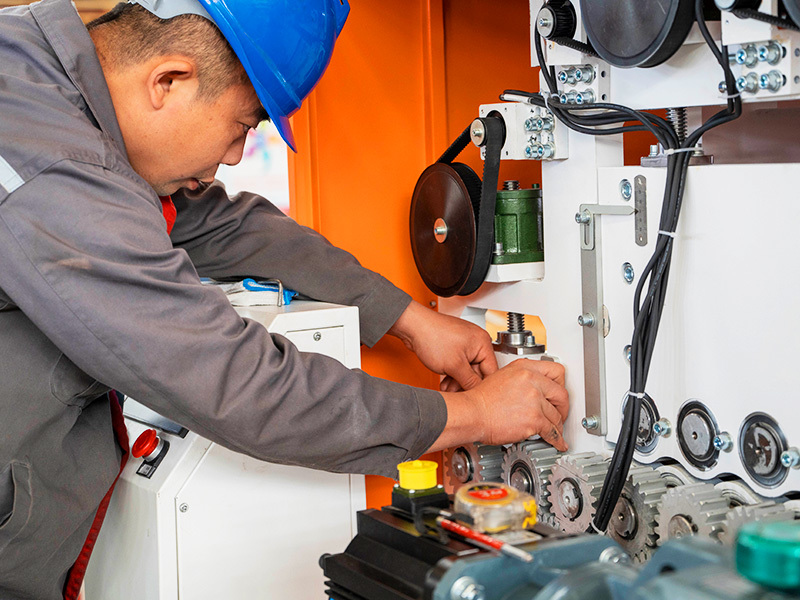The Vital Contribution of Guardrail Roll Forming Machines to Enhancing Road Safety

The Vital Contribution of Guardrail Roll Forming Machines to Enhancing Road Safety
Table of Contents
1. Introduction to Guardrail Roll Forming Machines
2. The Importance of Road Safety in Modern Infrastructure
3. Understanding Guardrail Systems
3.1 Types of Guardrails
3.2 Key Specifications and Standards
4. The Functionality of Guardrail Roll Forming Machines
4.1 How Roll Forming Works
4.2 Advantages of Using Roll Forming Machines
5. Innovations in Guardrail Manufacturing
5.1 Advancements in Material Science
5.2 The Impact of Technology on Production Efficiency
6. Case Studies: Successful Implementation of Guardrail Systems
7. Future Trends in Road Safety Solutions
8. Frequently Asked Questions (FAQs)
9. Conclusion
1. Introduction to Guardrail Roll Forming Machines
Guardrail roll forming machines are specialized equipment designed to manufacture guardrails used in road safety systems. These machines transform raw materials into complex profiles that serve as protective barriers along highways and roads. By producing high-quality guardrails efficiently and consistently, these machines contribute significantly to enhancing safety on the roads.
2. The Importance of Road Safety in Modern Infrastructure
Road safety is a critical aspect of infrastructure development, impacting millions of lives globally. As traffic volumes increase, the risk of accidents rises, making it essential to implement effective safety measures. Guardrails act as a line of defense, preventing vehicles from veering off the road and mitigating the severity of collisions. Their proper installation and maintenance can drastically reduce the likelihood of fatalities and injuries.
3. Understanding Guardrail Systems
Guardrail systems consist of several components designed to absorb impact and redirect vehicles safely back onto the roadway. Understanding the types and specifications of guardrails is crucial for ensuring their effectiveness.
3.1 Types of Guardrails
There are several types of guardrails, each designed for specific applications and road conditions. Common types include:
- **W-beam guardrails**: These are widely used due to their effectiveness in redirecting vehicles and are typically made from galvanized steel.
- **Thrie-beam guardrails**: These offer additional strength and are suitable for higher-speed highways.
- **Concrete barriers**: Often used in urban areas, they provide a rigid barrier that can withstand high impact forces.
3.2 Key Specifications and Standards
Guardrails must adhere to strict safety standards set by regulatory bodies. Key specifications include height, width, and material strength, ensuring they can withstand the forces exerted during an impact. Compliance with these standards is crucial for the safety of road users.
4. The Functionality of Guardrail Roll Forming Machines
Roll forming machines work by feeding metal sheets through a series of rollers that shape them into the desired guardrail profile. This process is not only efficient but also ensures uniform quality across all produced pieces.
4.1 How Roll Forming Works
The roll forming process begins with a flat metal sheet, which is gradually shaped into a guardrail profile as it passes through multiple rollers. The precision of this technique allows manufacturers to create complex shapes that meet specific design requirements.
4.2 Advantages of Using Roll Forming Machines
The use of roll forming machines offers several advantages:
- **Efficiency**: These machines can produce guardrails at a rapid pace, significantly reducing manufacturing time.
- **Cost-effectiveness**: Roll forming minimizes material waste, making it a cost-effective solution for manufacturers.
- **Versatility**: They can be easily adjusted to produce different profiles, catering to various road safety needs.
5. Innovations in Guardrail Manufacturing
The guardrail manufacturing industry is continuously evolving, with innovations aimed at improving performance and safety.
5.1 Advancements in Material Science
Recent developments in material science have led to the use of advanced alloys and composites that enhance the durability and strength of guardrails. These materials can better withstand environmental conditions and impact forces, resulting in longer-lasting safety solutions.
5.2 The Impact of Technology on Production Efficiency
Automation and smart technology have revolutionized the guardrail manufacturing process. Advanced software systems allow for real-time monitoring and adjustments during production, ensuring optimal output and quality control.
6. Case Studies: Successful Implementation of Guardrail Systems
Numerous case studies demonstrate the effectiveness of guardrail systems in enhancing road safety. For example, a highway project in a high-traffic area employed modern guardrail designs that resulted in a significant reduction in accident rates. Such success stories highlight the importance of investing in quality guardrails for road infrastructure.
7. Future Trends in Road Safety Solutions
As technology continues to advance, the future of road safety solutions looks promising. Innovations such as smart guardrails equipped with sensors to monitor traffic conditions or alert systems for incoming vehicles could revolutionize the way we approach road safety.
8. Frequently Asked Questions (FAQs)
What are guardrail roll forming machines?
Guardrail roll forming machines are specialized equipment used to manufacture guardrails, transforming flat metal sheets into protective barriers for roads.
How do guardrails enhance road safety?
Guardrails prevent vehicles from leaving the roadway during accidents, redirecting them safely and reducing the risk of serious injuries or fatalities.
What materials are commonly used in guardrail manufacturing?
Common materials include galvanized steel, aluminum, and advanced composites designed for enhanced durability and strength.
What are the benefits of using roll forming for guardrail production?
Roll forming is efficient, cost-effective, and versatile, allowing for the rapid production of high-quality guardrails with minimal material waste.
How do technological advancements affect guardrail manufacturing?
Technological advancements lead to improved production efficiency, enhanced material properties, and the potential for smart features in guardrail systems.
9. Conclusion
Guardrail roll forming machines play an essential role in the production of effective road safety solutions. By ensuring the consistent manufacture of high-quality guardrails, these machines contribute significantly to reducing the risks associated with road travel. As innovations in material science and technology continue to evolve, the impact of guardrails on road safety will only increase, making them a vital component of modern infrastructure. Investing in advanced guardrail systems not only protects road users but also enhances the overall safety of our roads.
Key words:
Previous Page
Previous Page:
recommend News
Share



